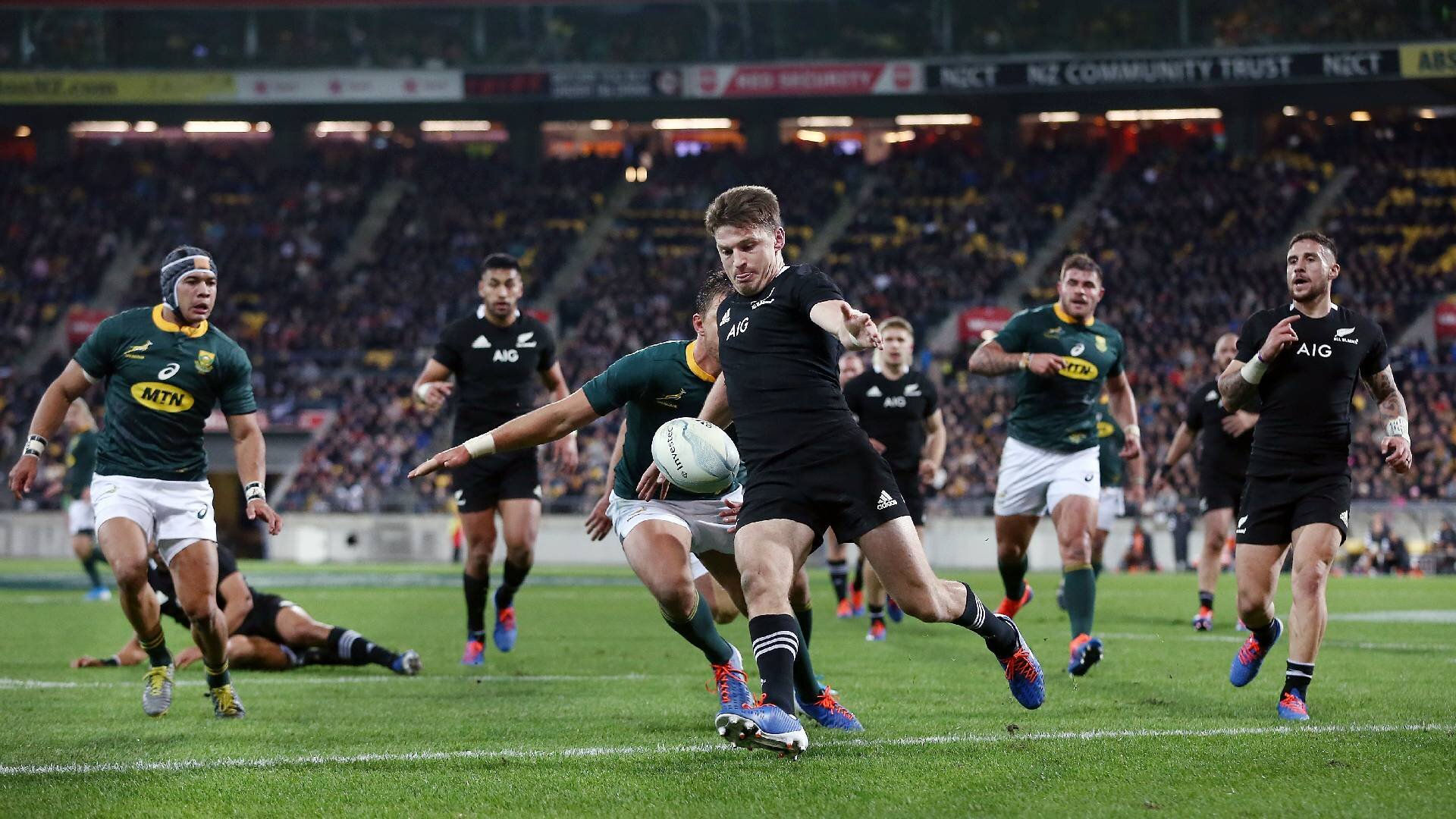How the All Blacks and Springboks will try to beat each other in World Cup opener

Hi guys and welcome to my first Rugby World Cup article that I will be doing with the wonderful people at Rugby Analytics. They have a different perspective on match data so I look forward to bringing you some interesting stories, even if it is with a South African slant!
Let us start with a preview of the Springboks versus the All Blacks because it is THE match of the weekend. But it is also a story about modern rugby. We live in a world where defence is king and teams are trying to find a way to break that down, and nowhere do we see this playing out more clearly than between these two teams.
The Springboks
Let us start by looking at what the Springboks do on defence. It is fair to say that they possibly they the most aggressive defence of all teams at the moment. Their wings do not sit back and wait like in the old days, they come up and join the front line defence early and then they are involved in trying to kill moves before the ball goes wide.
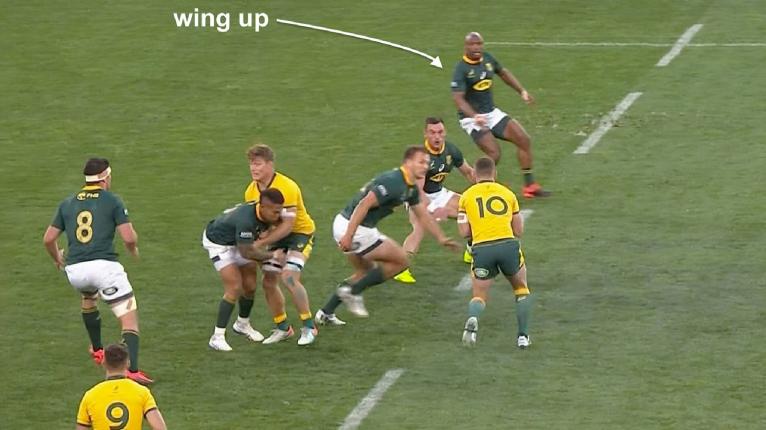
This is not unique to the Boks but they possibly the most aggressive at doing this. Added to that we often see Faf de Klerk also defending in the front line and shooting up, although this is not a “system” in the sense that it is expected of whoever is playing 9, it is more a strength of de Klerk and the coaches have let him off the leash to make the call if it is on.
But the real aggression comes in what the Springboks are trying to achieve. They do not want you to have any time to think, breath, or play any rugby at all. The Boks prioritise getting up into the opposition lines above all else, and to achieve this they do two things:
Continue reading below…
Firstly, they do not really make “reads”. They do not wait to make a decision about what to do, they just GO. It is not really a “situation-dependant” system. Because they do not wait to make a read, they win a crucial second to get that much closer to the opposition the moment the ball come out of the ruck. And believe me a defender can cover a lot of ground in one second.
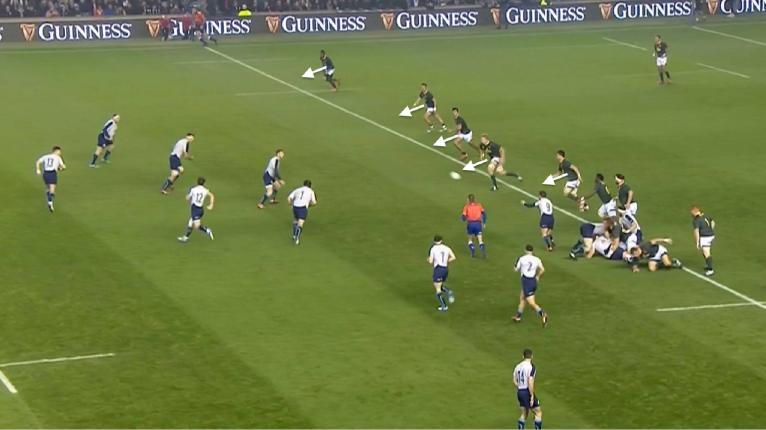
The other thing the Springboks do is to contest often at opposition breakdowns. They want to slow down the opponent’s ball because that gives their defenders time to get set for a rush. It is a crucial part of the Springbok plan. They just need to slow the ball by a second or two so that they have time to mirror the width of the attack and be in a position to shoot. This also has the effect of forcing the attack to send players to protect the rucks, so thinning their numbers.
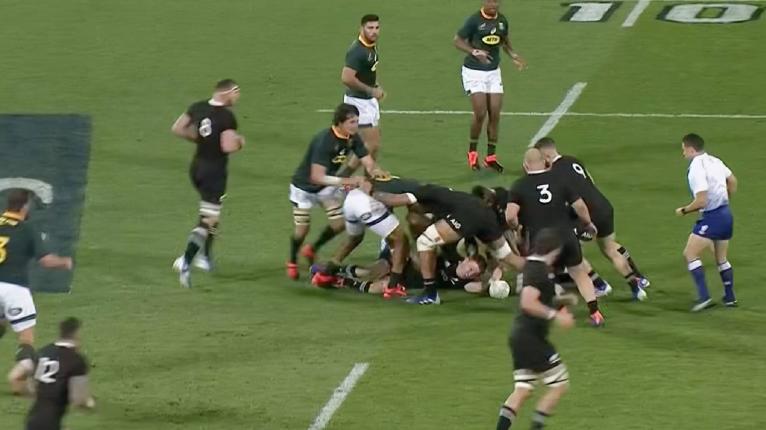
How much do the Springboks contest rucks? Rugby Analytics tells us that against the All Blacks in Wellington they contested an incredible 80 percent of rucks. In this day and age that is an unheard of number. In essence it mean that at almost every tackle point the Springboks sent at least one extra player to the breakdown. But the thing to remember here is that they do not necessarily want the ball – the priority is purely to see how they can slow down play (counter rucks, hands on ball, etc) so that the defenders outside them can get set to shoot.
This is not something the Springboks do in every game. Against Japan for instance they contested only 47 percent of rucks – which is still a lot – but it is a very interesting trend to keep an eye on. It is a cornerstone of how the Boks like to set up their rush.
Japan put on a show – fans give the opening ceremony to the 2019 Rugby World Cup their seal of approval
https://t.co/MdHs27UGFY— RugbyPass (@RugbyPass) September 20, 2019
If we take all these things together it is clearly a high risk/high reward approach. The Boks have disrupted elite attacks like New Zealand and England but we’ve also seen them concede easy tries around the edge when players get their timing or targets wrong. And by having numbers at the breakdown they sometimes lose width.
But every defence has a compromise somewhere, and the choice the Springboks have made is to just maximise “offensive defence” and then be willing to pay the price. That is why “missed tackle” stats are perhaps not always relevant with the Springboks. With such aggressive line speed you will always miss tackles – they go hand in hand. But in this system even just disrupting the attack (for instance forcing players to pass early) is a good outcome too.
The All Blacks
The Kiwis seem to be in a cycle of change that probably started after the Lions rattled them with big linespeed two years ago. So what we see them doing now, amongst other things, is using attack shapes that try to fight the rush by first splitting the defence. The aim is to set up a ruck in the middle of the field that gives them two sides to attack, with Barrett and Mo’unga as playmakers. This can take the sting out of the rush because defenders have to first fold around the ruck. They can also end up numbers down if they fold incorrectly. Also, with two wide zones to defend on either side of the ruck defenders can become more hesitant. And finally, presented with two options on attack the All Blacks can choose to overload one side to establish an advantage.
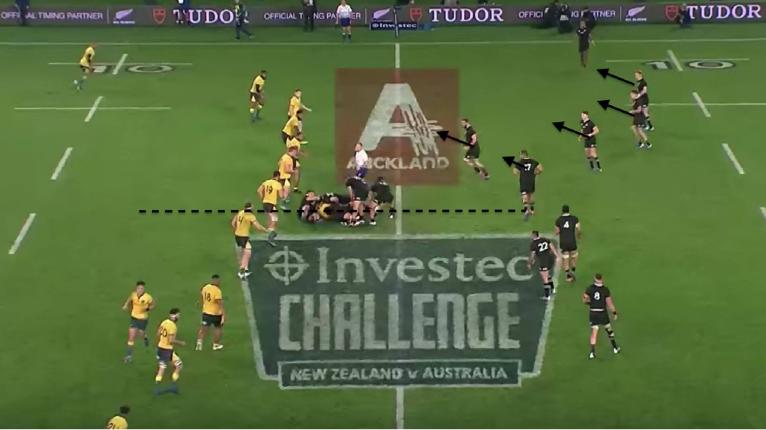
In these kinds of situations an outnumbered defence will almost always be more passive and drift, but what’s interesting is that in these kinds of situations the Boks will often rush anyway, even if they’re numbers down. To try and counter the effectiveness of these midfield rucks the Springboks will probably also move their heavy hitters like du Toit a channel or two wider to try and hit the All Blacks’ main carry back and prevent this deadly “split” quick ball.
Another interesting thing about the All Blacks is that they seem to be kicking less than they used to. There was a time when the All Blacks hardly kicked at all, but it was ironically the victorious Springboks of 2009 who made them go back to the drawing board and emerge as a elite offensive kicking outfit. And in Super Rugby it is traditionally New Zealand teams that top the kicking stats.
Japan up and running with a bonus point win over Russia https://t.co/EKDrhKcI4v
— RugbyPass (@RugbyPass) September 20, 2019
But Rugby Analytics tells us that the All Blacks this year are averaging only 11 kicks per match (excluding exit kicks). Compare that to Super Rugby where teams kick on average 20 times per match, or to South Africa who are averaging almost 19 kicks per match this year. In rugby most matches are won by the team that kicks more, but the All Blacks seem to be shifting away from that in search of a new formula.
Taking all this into account, my feeling is that we are seeing a tentative reinvention of the All Blacks style. The rise of offensive defence is probably one big reason, but it could also be that the All Blacks are looking at how much ball teams kick away in modern rugby and that they want to feed off that possession. Kicking less as well as interesting player selections lead me to believe this. The choice of Beauden Barrett at 15 is notable because there is probably no player in the world better fitted for orchestrating counter-attack. He has the tactical awareness to identify space, the speed to take play to where that weakness is, and the skill to bring his team mates into play.
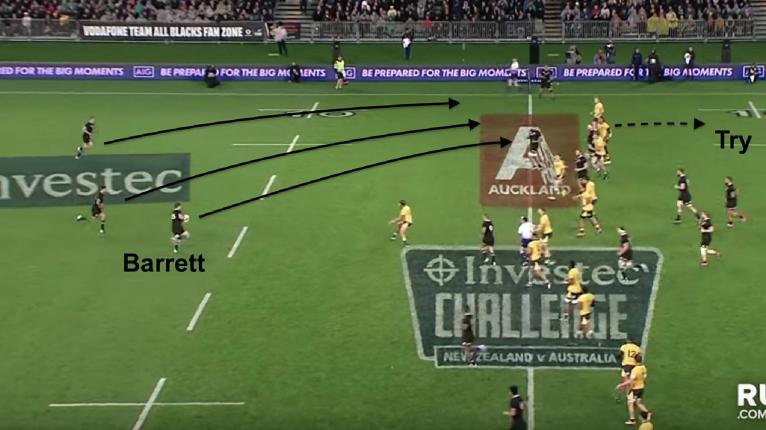
New Zealand seem to be moving towards smaller, more mobile flankers. Sam Cane and Ardie Savea are both powerful and skilled players but most importantly they have the speed to get to breakdowns to protect All Black ball – vital when you are playing possession rugby. It can also explain the axing of veteran prop Owen Franks who is perhaps not mobile enough to get around the field as New Zealand develop their phase play.
I suspect the All Blacks coaching staff hoped to cement this new approach before the World Cup started, but that the draw against the aggressive Springbok defence in Wellington means they’re still not where they want to be. If we look back at that draw we can see why the All Blacks struggled and what they might change for Saturday:
As we’ve already established, the All Blacks hardly threatened the Boks with kicks. They generally kept ball in hand and tried to work the Boks out in phases. The problem is that the more they played with width, the more the Boks could catch them behind the advantage line. Again, the Springboks don’t just have a rush defence, they have an especially aggressive defence, so the wider All Black carries were happily gobbled up the Boks.
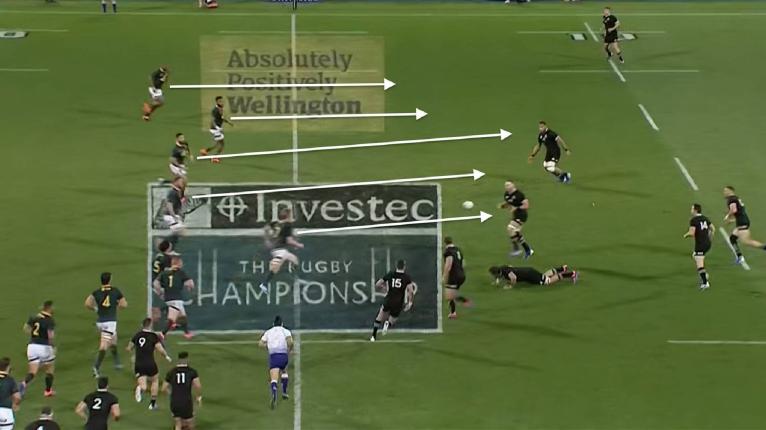
Rugby Analytics backs this up by showing that the average All Blacks carry against the Springboks was around 15m from the ruck – relatively wide targets. They attacked Damian de Allende and Lukhanyo Am’s channels – and wider – possibly perceiving weaknesses there, but were often hit early, held up, or driven back. Have a look at the graph below.

Contrasting that with how much narrower New Zealand were against Australia and Argentina, and Rugby Analytics tells us that their average carry in those games was 10m from the ruck, much closer targets of we look at the graphic.

It would make sense for the All Blacks to play narrower against the Springbok rush, where they can develop their carries, build quick ball and wait to exploit slower defence, poor folds, mismatches and numbers-down. But the interesting thing is that I do not know if they have the pack to do this.
By choosing two “6-and-a-half flanks” in Cane and Savea they get work-rate and speed, but they lose a little bit of the hammer blow that a traditional blindside gives you on attack and defence. It will be fascinating to see where the All Blacks set their targets and if they are able to develop their phases closer to the rucks.
That is assuming they play that way at all! Because my money says they going to try and kick the Springboks to pieces. The great weakness of the Bok defence is the space they leave behind them.
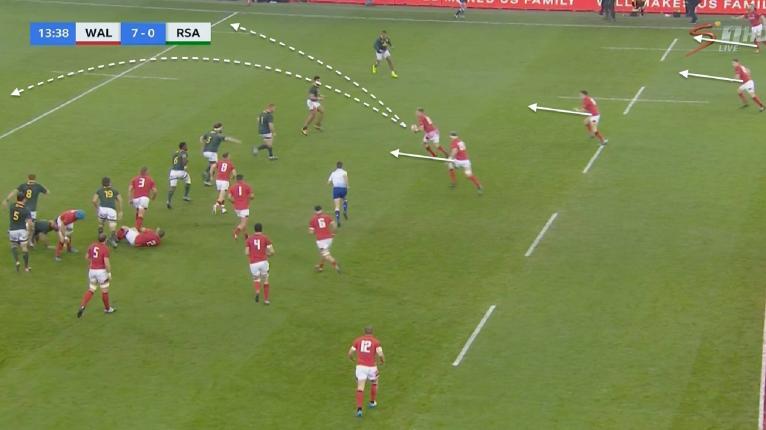
I think we will see the All Blacks manipulate the aggressive Springboks and then kick into the space on offer, especially with late kicks after the Boks have moved up. And we will see the rest of the package too: cross kicks, grubber-and-chase through the oncoming rush, chip kicks and of course box kicks onto the wings. The All Blacks have excellent rabbits (chasers) and in a wet game these kind of tactics will be very profitable.
It is something the Springboks will do too, and the match will probably be decided by the team that can execute the best, and who can deal with these tactics the best. Will the Bok pack give them an edge? Is there something completely different either of these teams is hiding? Tomorrow we will find out, and I for one can not wait.
Thank you to Rugby Analytics for the data and to Helene for the language editing and the website. Take care guys, and enjoy the game!
This article first appeared on www.oomrugby.co.za and was republished with permission.
In other news:









































































